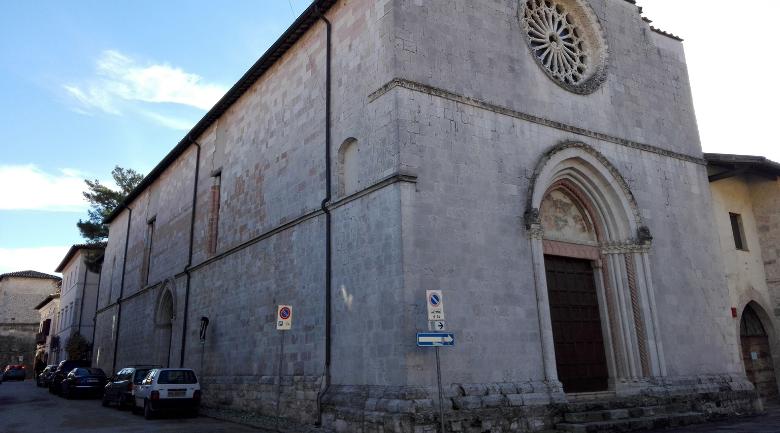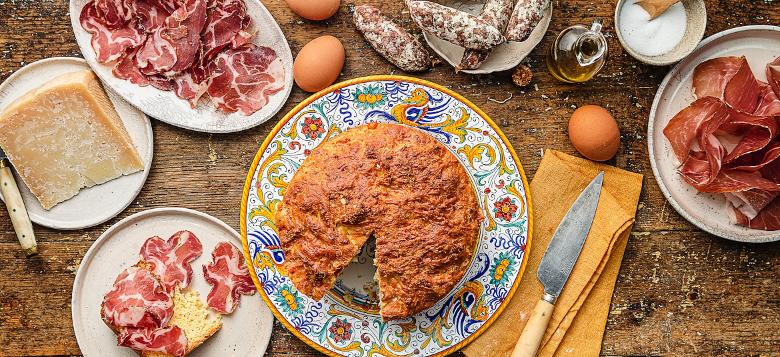Description
The church has a gabled façade with a beautiful Romanesque portal; there is a lunette on which you can read the date 1190, the year in which the construction began; the church facade is also characterised by the large rose window, with a double row of columns, framed by a box with the symbols of the four Evangelists. In the 17th century, the bell tower was built by the architect Crescenzi.
The interior, which has a nave with a raised presbytery, underwent a restoration in the 1950s aimed at recovering its original form. On the windows there are some fragments of the original fresco decoration. Behind the high altar, with a Crucifixion painted by Nicola da Siena - which was active during the 15th century, even in the church of San Francesco in Cascia and San Salvatore a Campi - you can see an elegant tomb of Sant'Eutizio created by Rocco di Tommaso (1514). The fine wooden 16th century choir stalls comes from the workshop of Seneca di Piedivalle, and a wooden pulpit is housed at the church of Sant'Andrea in Campi Alto. Under the presbytery is the crypt with two columns dating from the 14th century.
Curiosity
Around the year 1000, the abbey became an important cultural centre with a rich library and a school of miniatures. From the library came the Formula di confessione of 1095, one of the oldest texts in the vernacular. The Abbot Giacomo Crescenzi in 1605 donated a number of the books to San Filippo Neri who transferred them to the Vallicelliana Library in Rome.
From the 10th to the 13th centuries, the abbey's power increased, with it annexing many territories to its property and making itself a promoter of an important surgical school.
Useful information
The abbey is open to visitors; one part of it is a museum.
For information about visiting hours you are advised to contact the Valnerina-Cascia tourist office.
At the moment the abbey cannot be visited




























.jpg/b16a46d6-f584-4fe7-8ccb-0303c349dc8f?width=780)




